It will be a slow start to the week, with the markets closed on Monday for Presidents’ Day.
Things should pick up for the market by Wednesday. Of course, we’ll have the Fed minutes, and then on Thursday, we’ll get initial and continuing jobless claims.
Friday will be more interesting as we’ll receive Flash PMI data from S&P Global. Additionally, we’ll get the final University of Michigan readings for February. The key focus here will be inflation expectations, which rose significantly in the preliminary readings. We’ll also start seeing some regional Fed data, which is crucial because it provides insights into the labor market and inflation trends.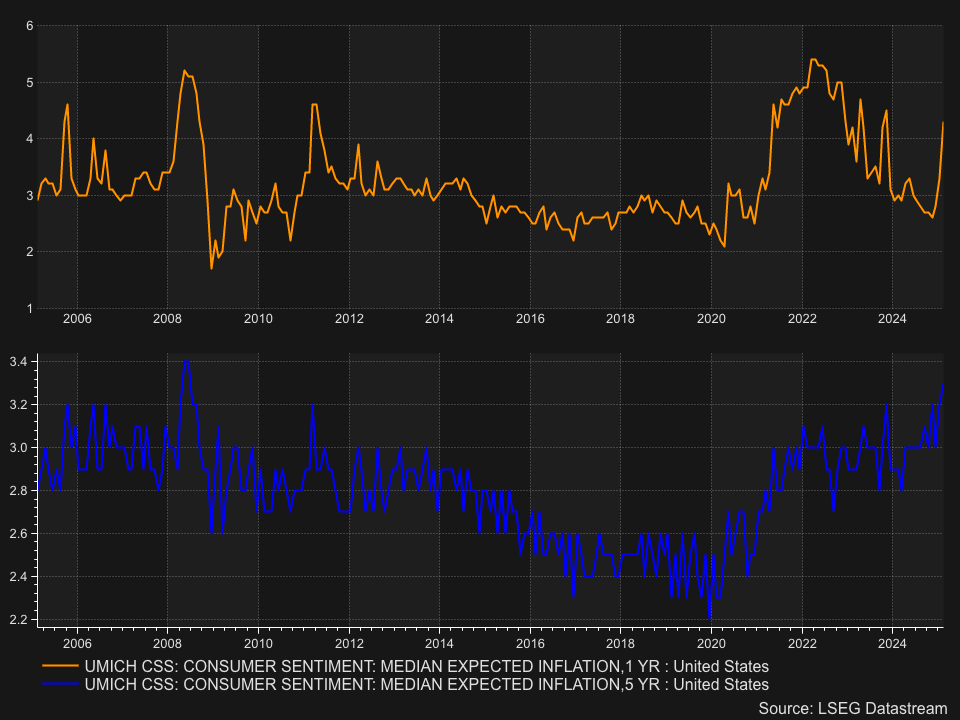
10-year rates declined on Thursday and Friday following the PPI report. We had a hot CPI reading, but PPI came in slightly cooler. After the CPI report, expectations for core PCE increased, but following the PPI report and some weaker inputs that go into core PCE, expectations came back down. The data remains mixed, but broader trends suggest that the market anticipates inflation staying around 3% for most of this year.
A good indicator of this is inflation swaps. One- and two-year inflation swaps broke out meaningfully this past week. The one-year inflation swap (blue line) and the two-year (white line) had been consolidating at higher ranges, but in early February and late last week, we saw clear breakouts in inflation expectations. If data continues trending higher, we could see further movement upward.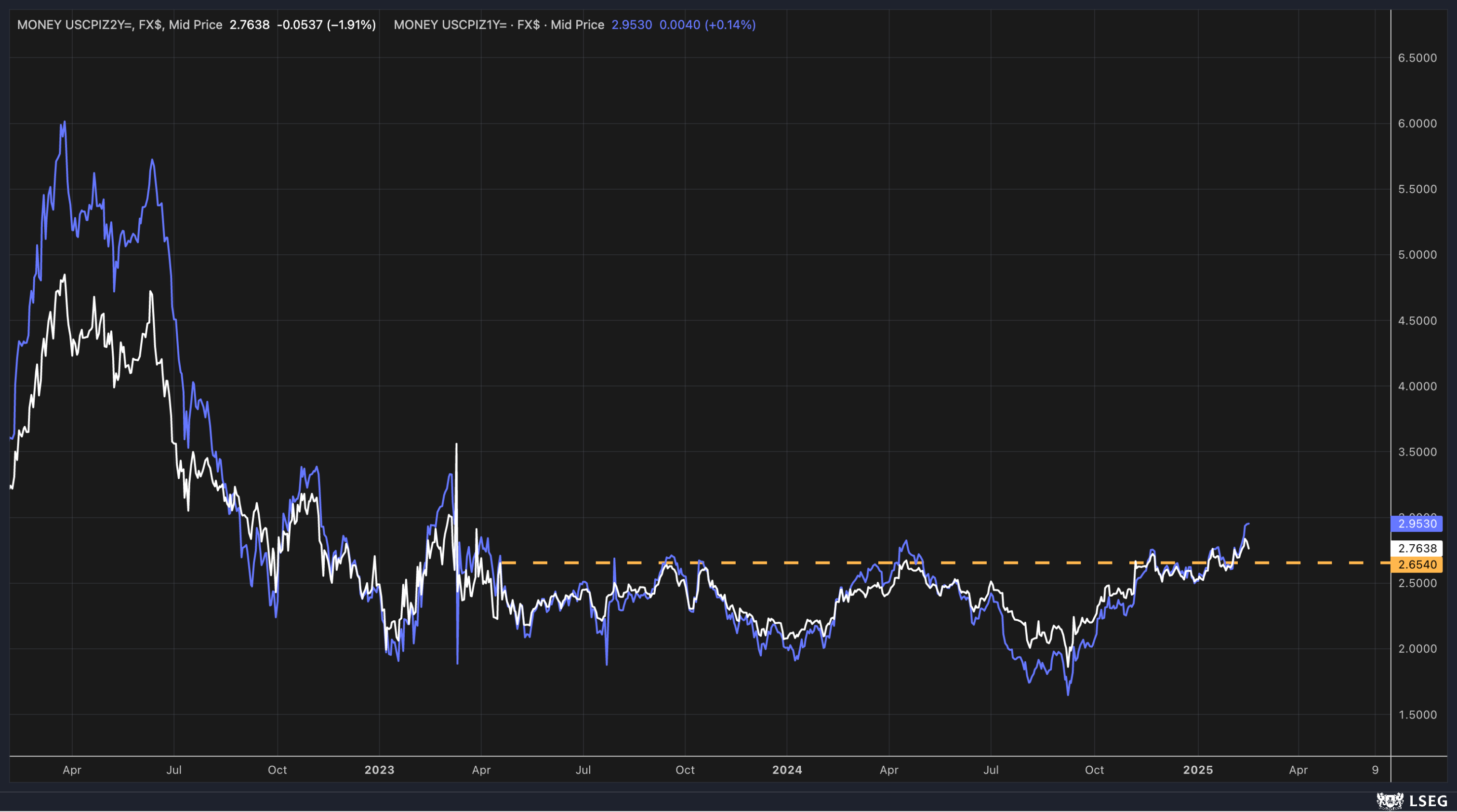
Some might argue that the PPI report significantly improved the inflation outlook, but the market data suggests otherwise. While PPI may have helped core PCE expectations in the short term, the market is still pricing in inflation around 3% for the year. Of course, the market can constantly adjust its expectations, but inflation expectations remain elevated for now.
Given this outlook, we must consider what it means for 10-year Treasury yields. Historically, 10-year yields tend to move in the direction of inflation swaps. It’s not a perfect correlation, but recently, they have aligned. If inflation swaps continue rising, the decline in interest rates over the past two days is unlikely to persist, and we may see 10-year yields move higher again.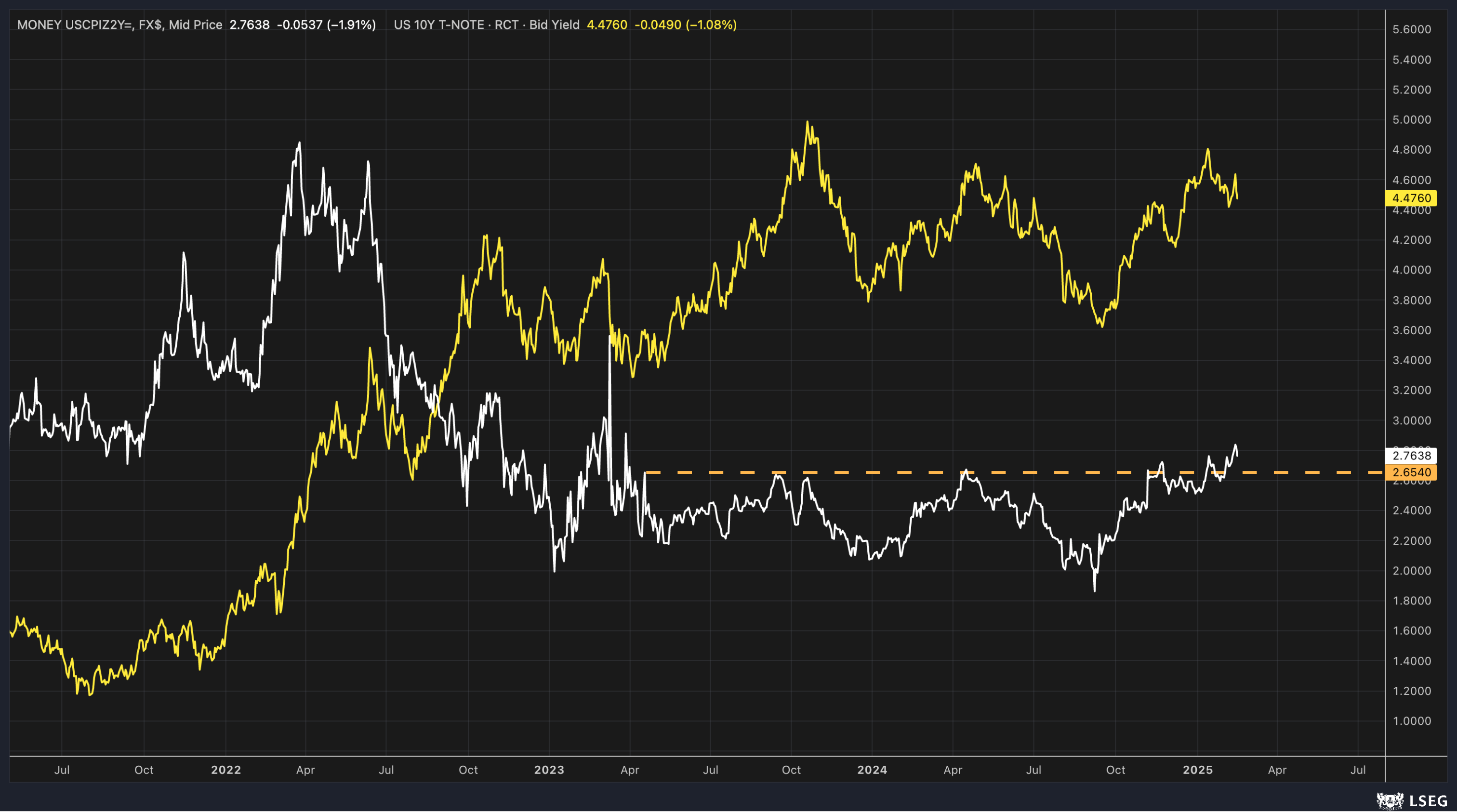
If inflation swaps start declining, that would change the outlook for interest rates. But for now, the trend suggests rising inflation expectations. Other factors could also contribute, such as commodity prices. We’ve discussed copper prices, which have surged recently. Although they pulled back on Friday, they remain near a key level of around $4.70. If copper pushes toward $5, it could drive inflation expectations higher.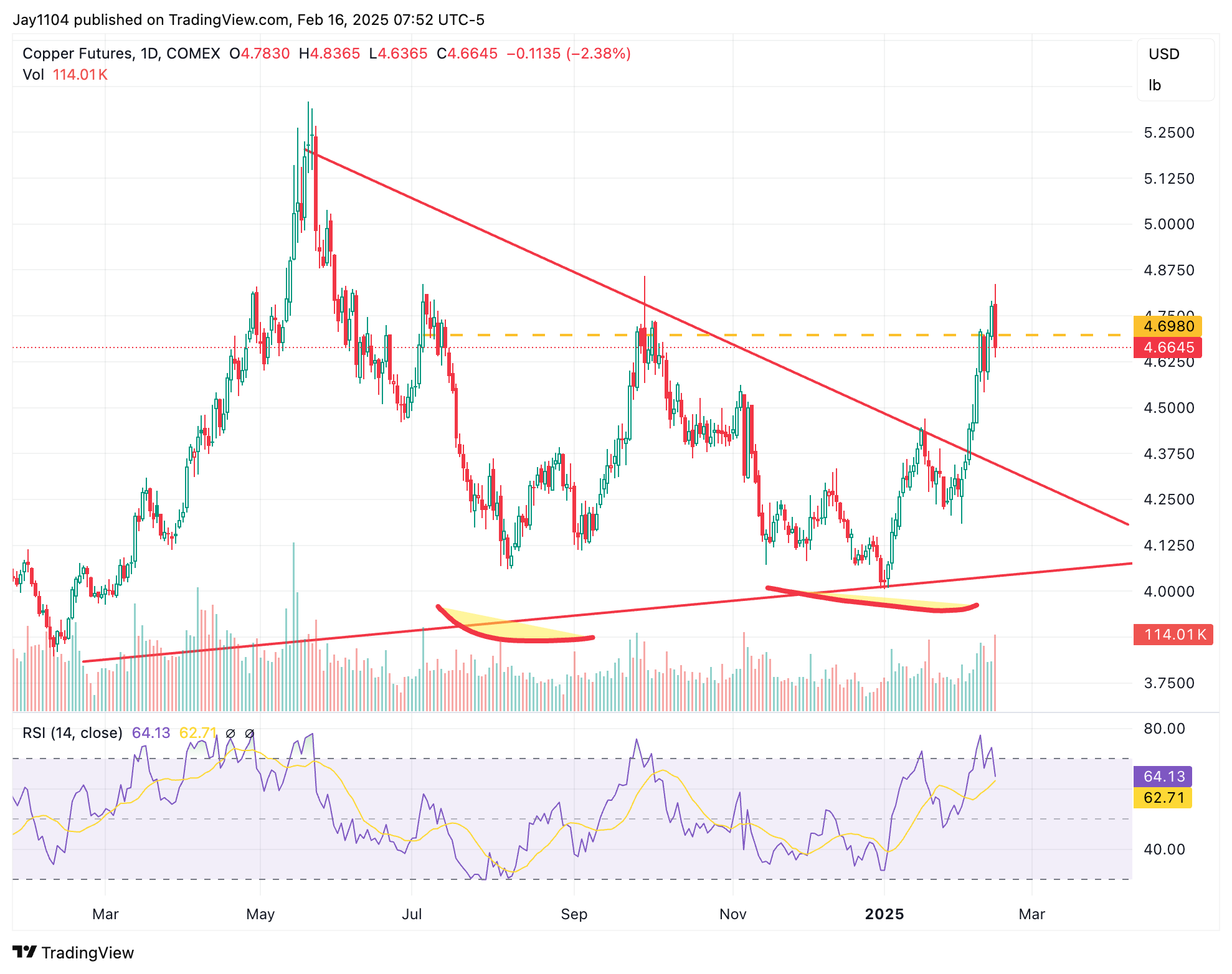
Meanwhile, oil hasn’t participated in this move. The key question is whether oil is poised for a breakout. It looked possible when prices briefly rose above resistance, but they’ve since pulled back. Oil is now sitting around the $78–$61 retracement level. A break below $70 could mean a return to the low-to-mid $60s, but if oil holds above $70, it could indicate a trend reversal, leading to higher prices.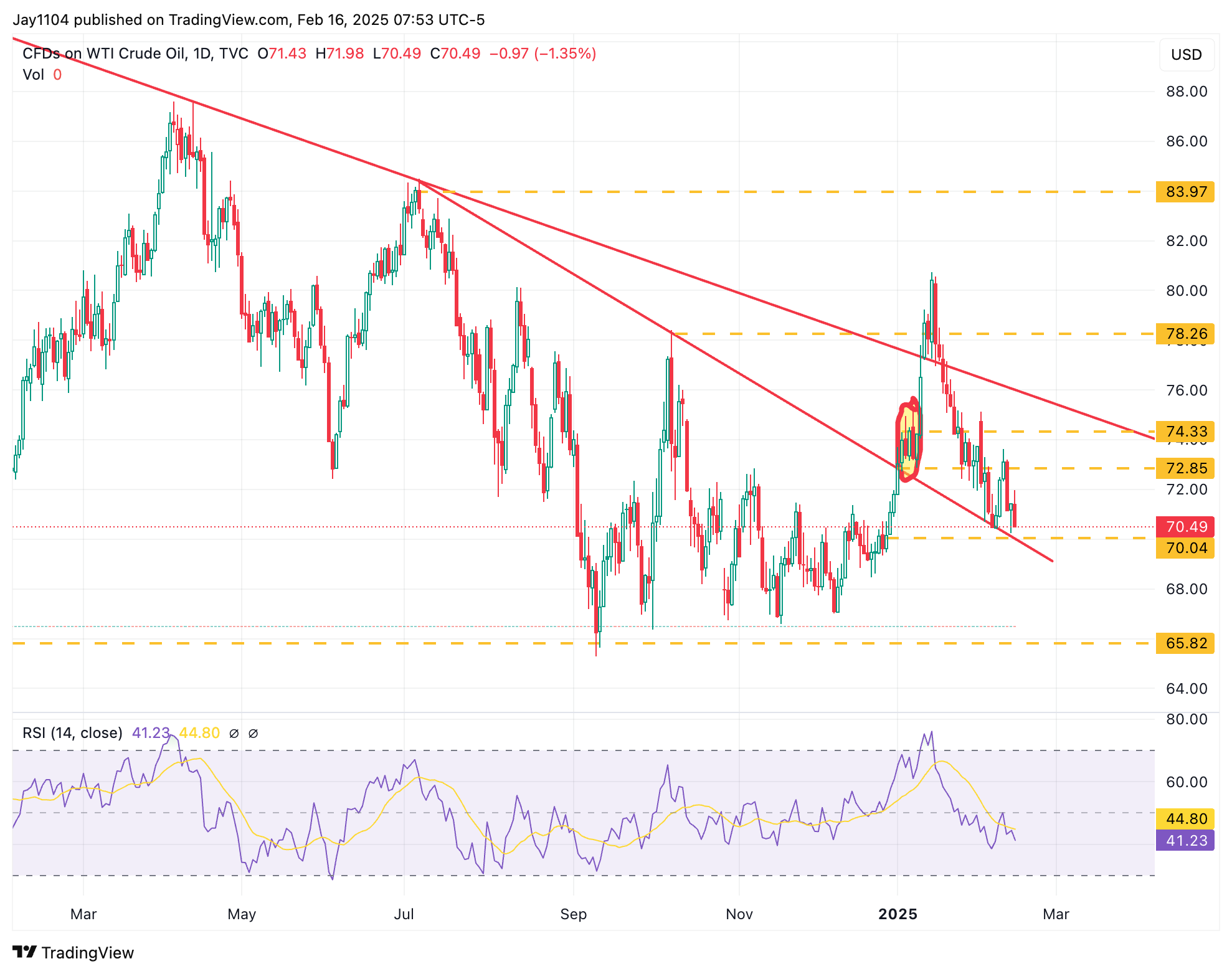
Gasoline prices have also been slowly trending higher. If oil, gasoline, and copper all continue rising, inflation expectations will likely push interest rates higher. The recent two-day decline in 10-year yields may have resulted from traders adjusting positions rather than an actual shift in the inflation outlook.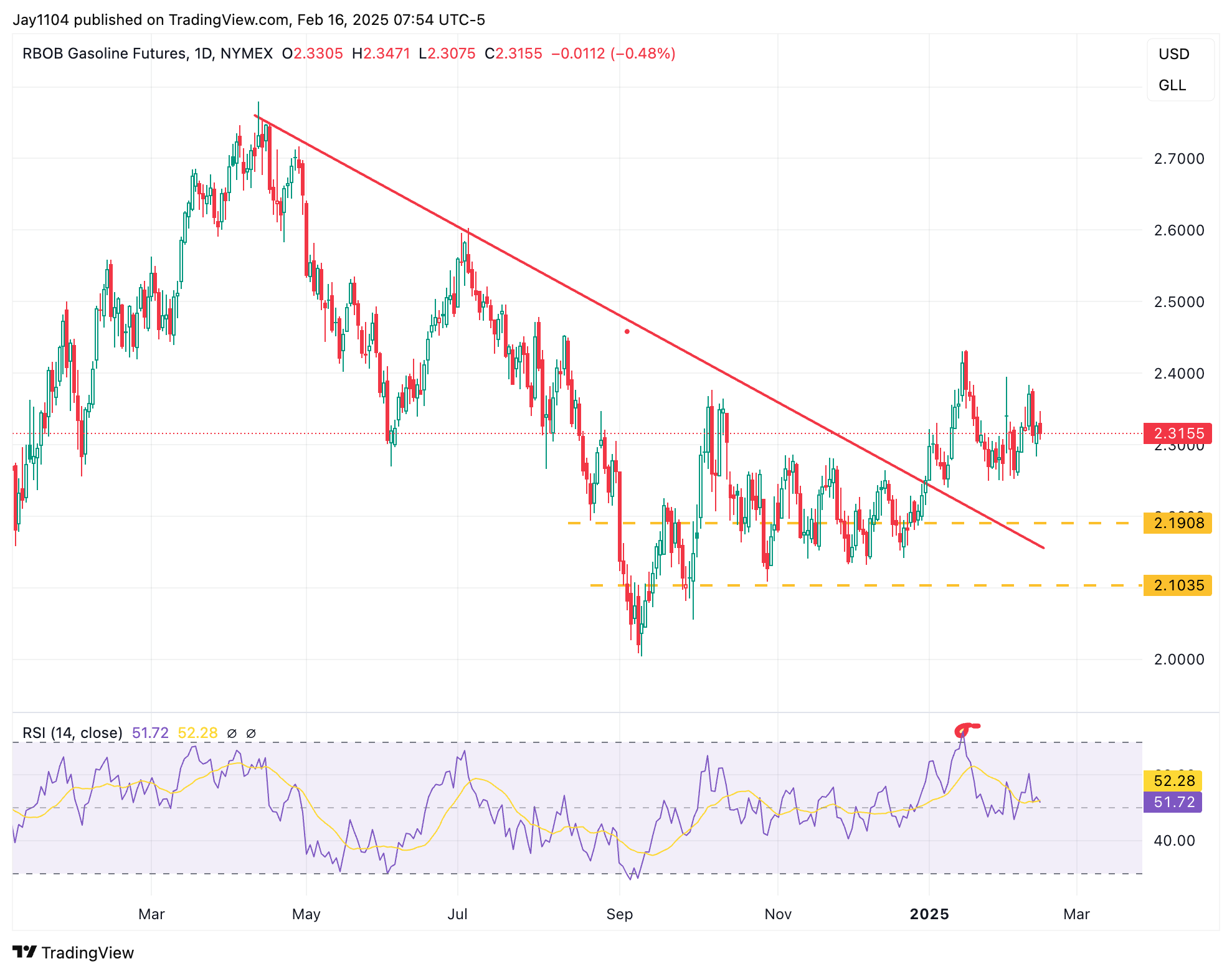
Turning to equity markets, there’s a lot at play. We’re heading into options expiration week, with significant gamma positioning around 6,100 on the S&P 500, acting as resistance, and another large gamma level at 6,000, which could act as a magnet, and the call wall around 6,150. Given this setup, it’s uncertain whether the S&P 500 will break out this week, especially with a shortened trading week and OpEx on Friday.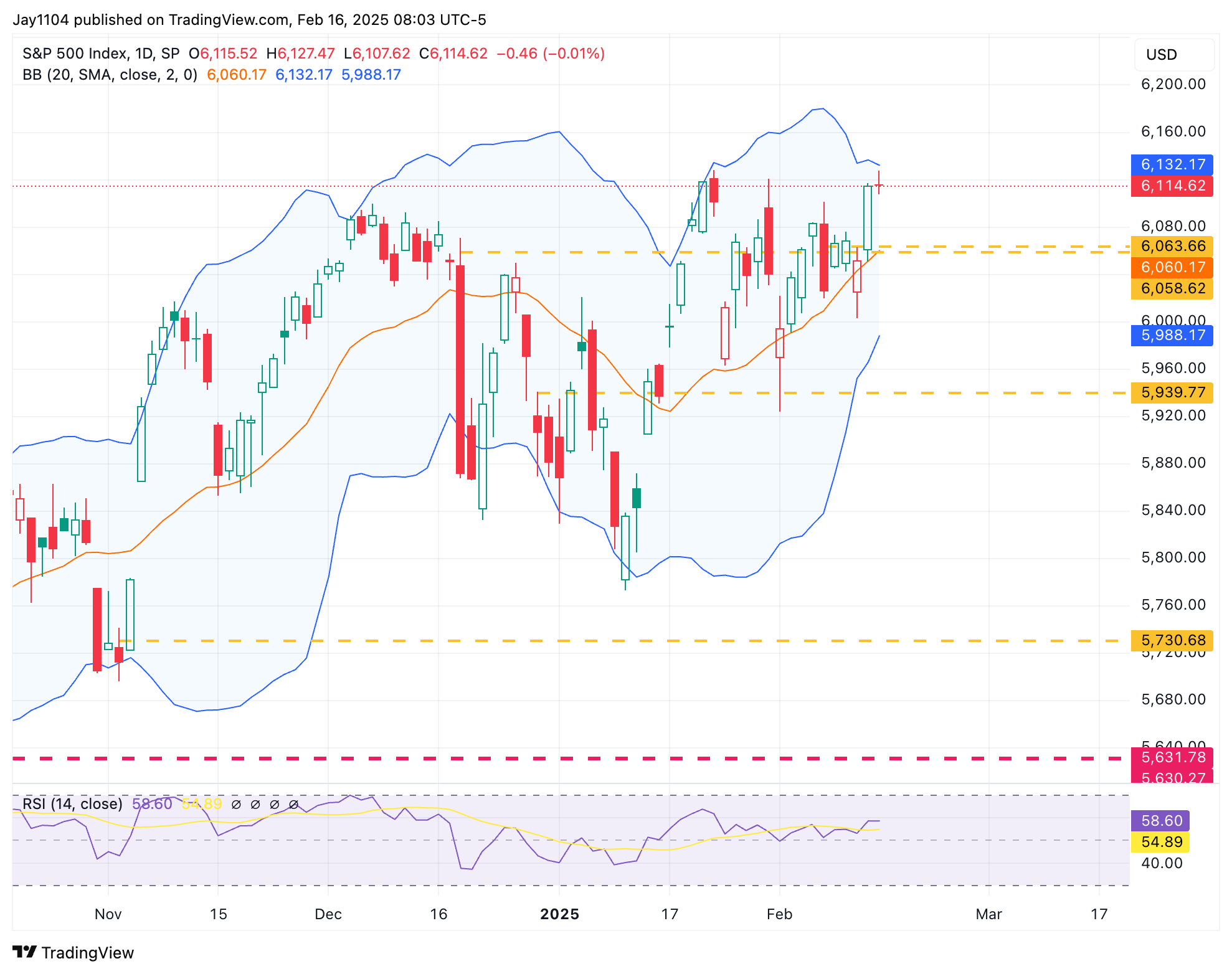
From a technical perspective, the S&P 500 is at the upper Bollinger Band, and RSI is pulling back. If the index can break above 6,150 with strong momentum, that would change things, but option positioning will be a major factor.
However, with implied volatility remaining relatively stable—VIX has held around 14–14.5 since the start of the year—it’s unclear whether we’ll see a significant move because it is unclear if the VIX will be willing to go below 14 in an environment with a much faster and more uncertain news flow.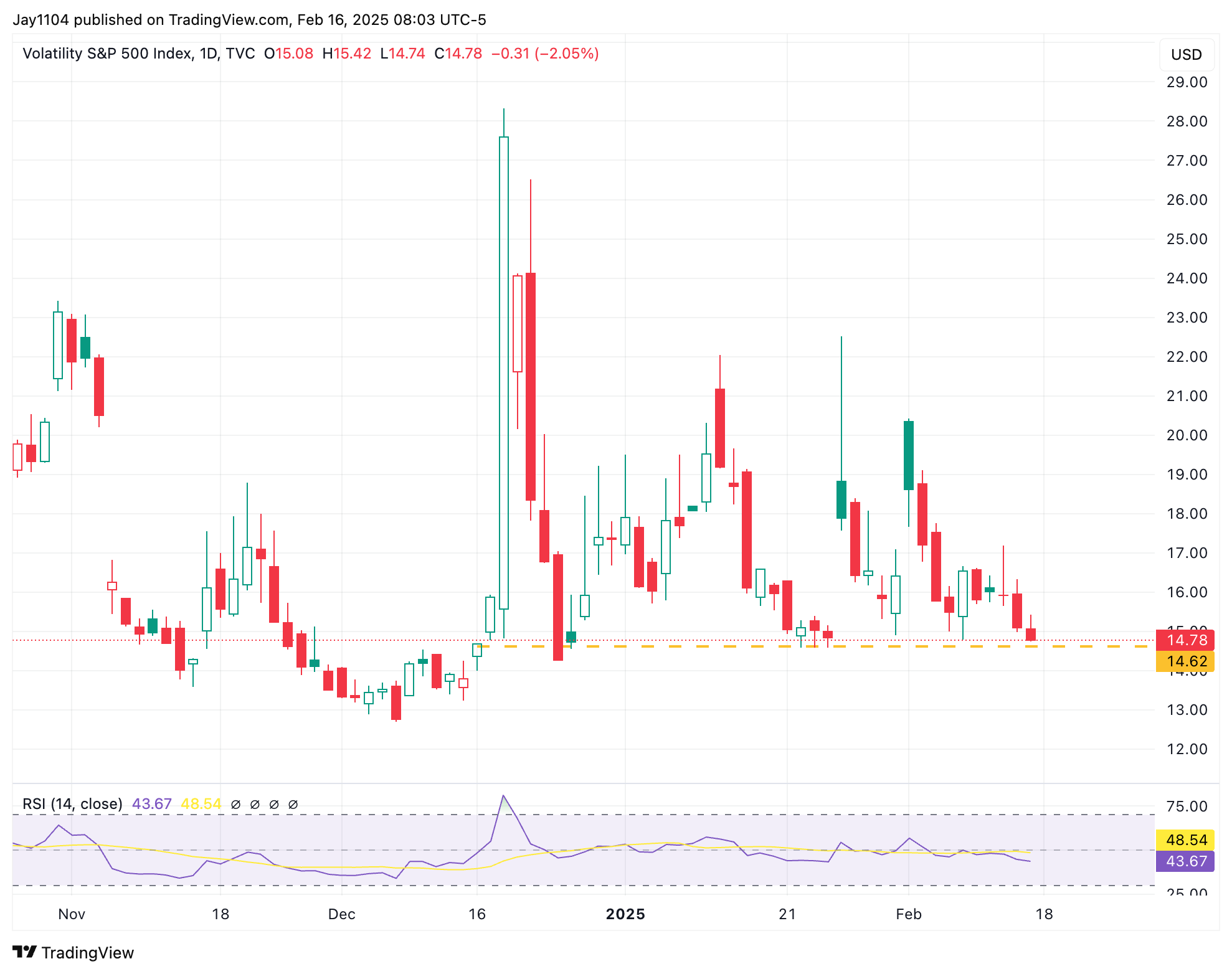
The one-month implied correlation has also been declining, making a significant breakout in equities less likely unless volatility starts falling. The 1-month implied correlation index is already near historically low levels. Given all these factors, I think the equity market remains range-bound between 5,900 and 6,100, +/- 50 points.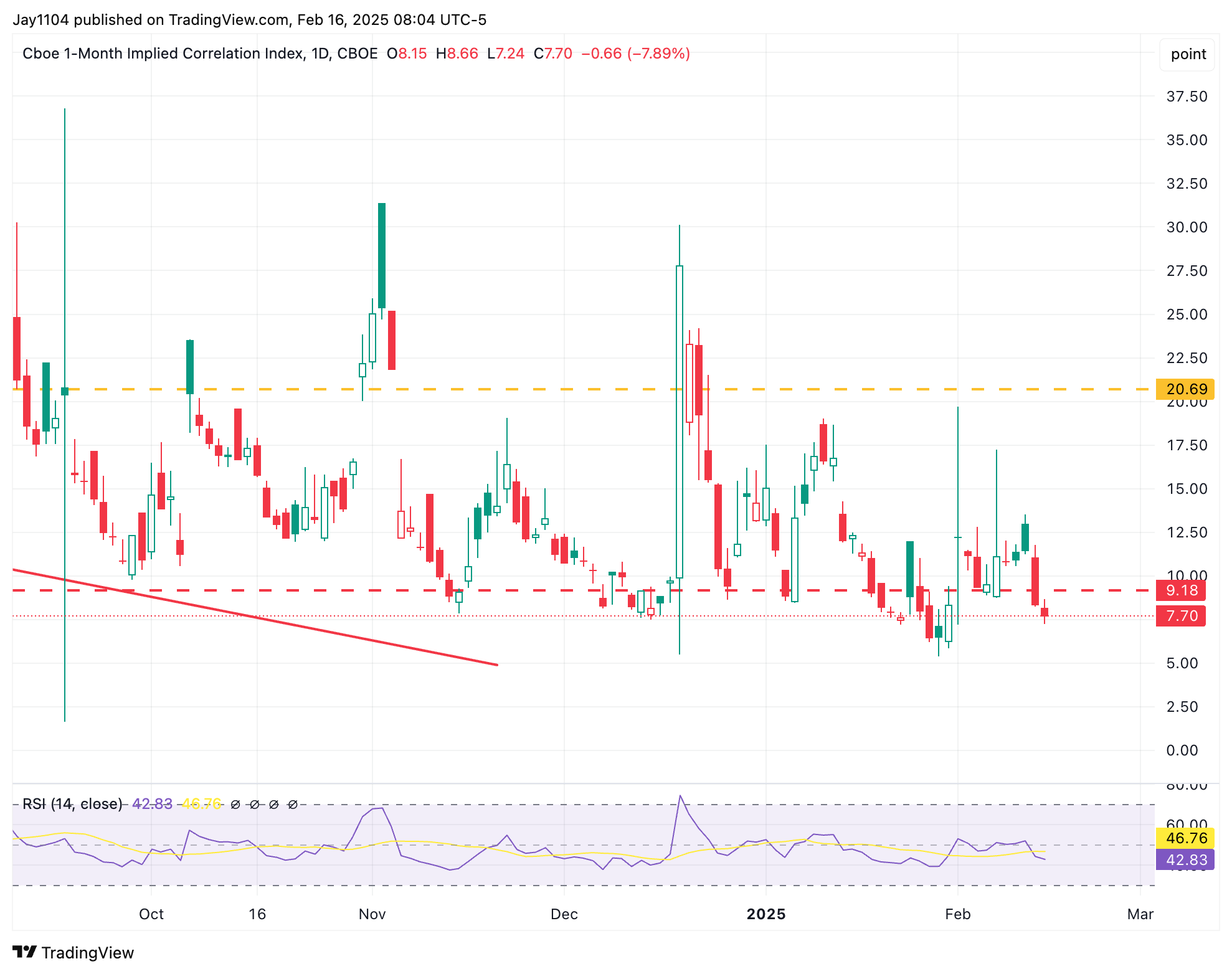
At the same time, I expect longer-dated interest rates to continue rising, driven by inflation expectations, which commodities like copper, oil, and gasoline may influence.
Terms by ChatGPT:
1. Inflation Swaps
A derivative contract where two parties exchange cash flows based on actual inflation versus a fixed inflation rate. Used to hedge or speculate on future inflation.
2. Core PCE (Personal Consumption Expenditures Price Index)
A measure of inflation that excludes volatile food and energy prices. It’s the Federal Reserve’s preferred inflation gauge for policy decisions.
3. PPI (Producer Price Index)
Measures the average change in selling prices received by domestic producers for their output. Often considered a leading indicator of consumer inflation (CPI).
4. Gamma Exposure (Options Market)
Refers to how changes in an underlying asset’s price impact market makers’ hedging activities. Large gamma positioning can act as support or resistance in equity markets.
5. Implied Correlation Index
A measure of expected correlation among stocks in an index based on options pricing. A lower implied correlation suggests more stock-specific movement, while a higher one indicates broad market moves.
6. Implied Volatility (VIX, VIX1D)
VIX: A real-time market index representing expected volatility over the next 30 days.
VIX1D: A newer measure reflecting expected volatility for the next trading day.
7. Bollinger Bands
A technical indicator consisting of a moving average and two standard deviation bands. It helps identify overbought or oversold conditions in an asset.
8. Treasury Yield Curve (Back End of the Curve)
Refers to longer-term interest rates (e.g., 10-year and 30-year yields). Movements in long-term yields reflect market expectations for growth, inflation, and Fed policy.
9. Positioning & Short Covering
Positioning: The current stance of traders in a market (long or short).
Short Covering: When traders buy back borrowed securities to close a short position, often causing temporary price spikes.
10. OpEx (Options Expiration)
The date when stock, index, or futures options contracts expire. Large open interest can influence market movement due to hedging adjustments.
